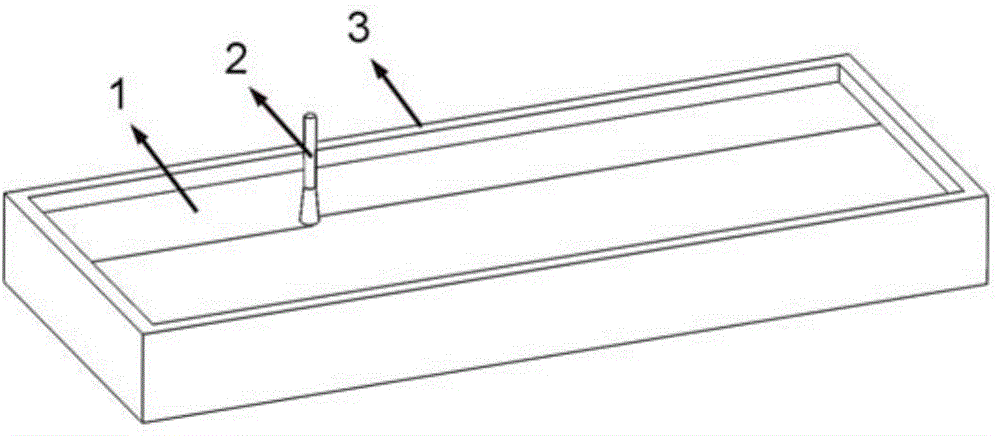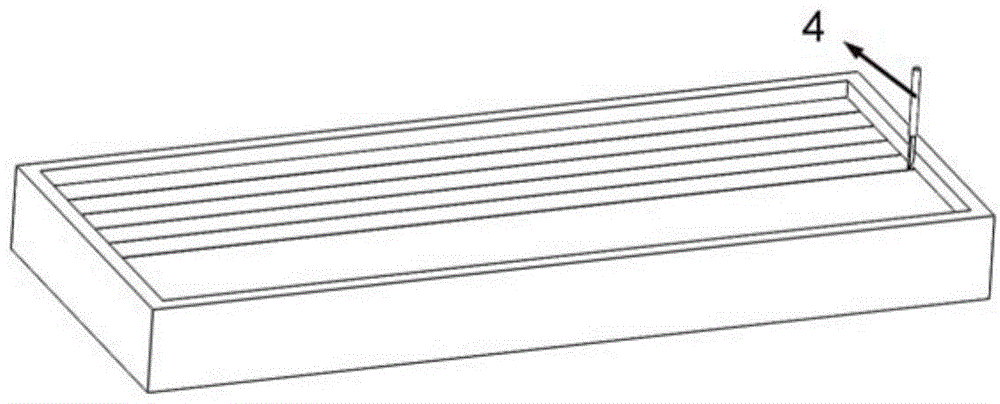Low-melting-point metal wire for 3D printing and manufacturing method thereof
A low-melting-point metal and metal wire technology, applied in the field of 3D printing, can solve the problems of lack of metal characteristics such as high conductivity and high strength, and can not achieve conductive functions, so as to reduce the production cost, reduce the degree of oxidation, and facilitate recycling. Effect
- Summary
- Abstract
- Description
- Claims
- Application Information
AI Technical Summary
Problems solved by technology
Method used
Image
Examples
Embodiment 1
[0031] Weigh pure gallium and pure zinc respectively according to the mass ratio of 96.4:3.6, put them into a stainless steel container, place the container in a vacuum thermostat at 350°C for 2 hours, and then stir it with a magnetic stirrer for 30 minutes to obtain gallium base alloy GaZn 3.6 The ink has a melting point of 24.5°C and a Mohs hardness of 1.8-3.5.
Embodiment 2
[0033] Weigh pure indium and pure tin according to the mass ratio of 50.8:49.2, put them into a stainless steel container, place the container in a vacuum thermostat at 230°C for 1 hour, and then stir it with a magnetic stirrer for 100 minutes to obtain indium base alloy InSn 49.2 The ink has a melting point of 120°C and a Mohs hardness of 1.2-2.
Embodiment 3
[0035] Weigh pure bismuth, pure indium, pure tin and pure lead according to the mass ratio of 49:21:12:18, put them into stainless steel containers, place the container in a vacuum thermostat at 250°C for 4 hours, and then use magnetic Stirring with a stirrer for 50 minutes, the bismuth-based alloy BiIn 21 sn 12 Pb 18 The ink has a melting point of 58°C and a Mohs hardness of 1.7-2.3.
PUM
| Property | Measurement | Unit |
|---|---|---|
| diameter | aaaaa | aaaaa |
| melting point | aaaaa | aaaaa |
| melting point | aaaaa | aaaaa |
Abstract
Description
Claims
Application Information
 Login to View More
Login to View More - R&D
- Intellectual Property
- Life Sciences
- Materials
- Tech Scout
- Unparalleled Data Quality
- Higher Quality Content
- 60% Fewer Hallucinations
Browse by: Latest US Patents, China's latest patents, Technical Efficacy Thesaurus, Application Domain, Technology Topic, Popular Technical Reports.
© 2025 PatSnap. All rights reserved.Legal|Privacy policy|Modern Slavery Act Transparency Statement|Sitemap|About US| Contact US: help@patsnap.com



